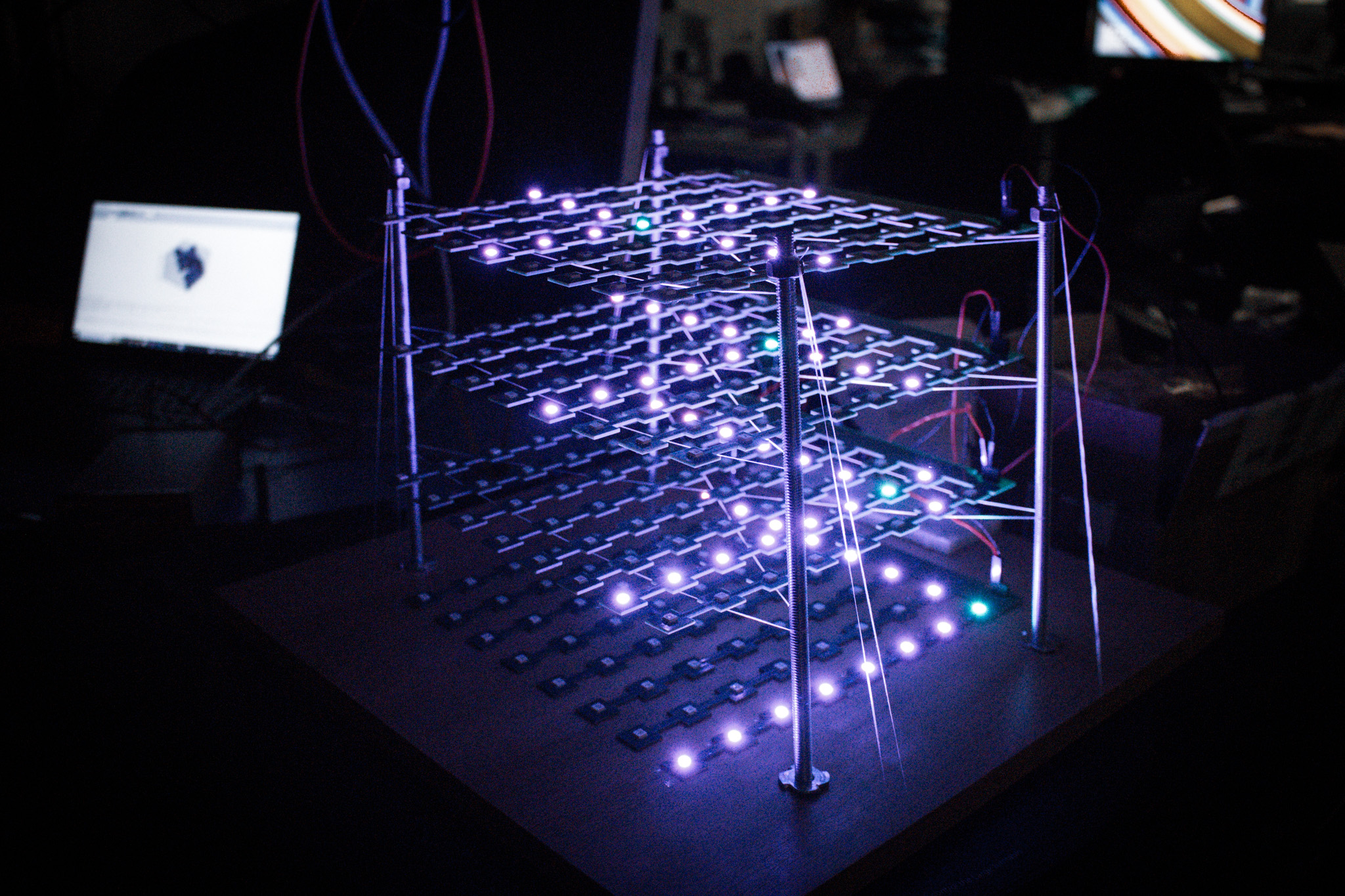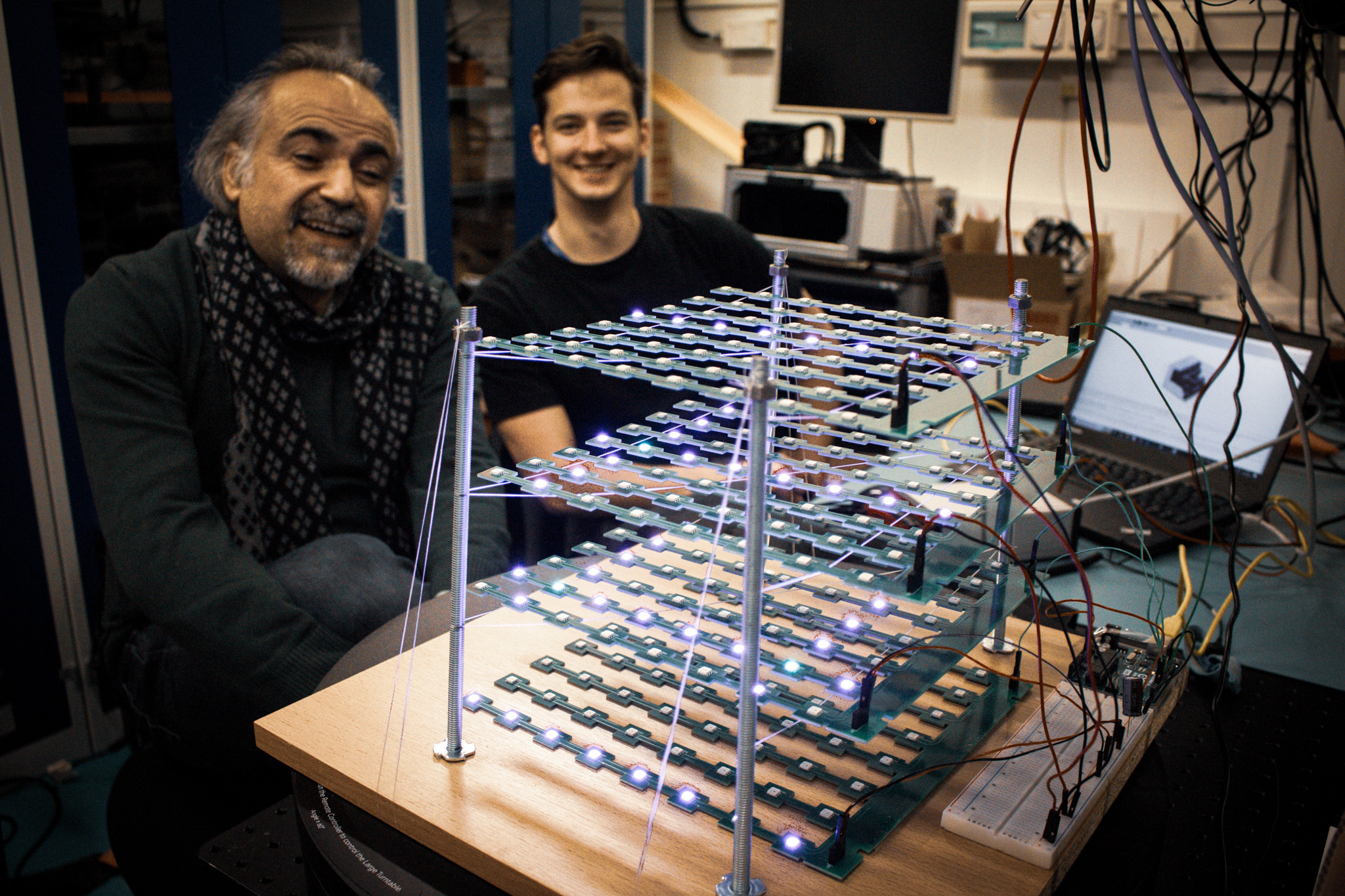CERN Researcher & Published Co-author
Conducted fundamental R&D on a novel particle detector at CERN, leading to several co-authored publications in prestigious journals, and recognition by CERN's official channels
Master's Thesis at CERN
In February 2023, I moved to CERN (Geneva) to begin my master's thesis with the 3DET Collaboration under Umut Köse, whom I had taken as a professor in neutrino physics alongside Davide Scalaberna. My thesis focused on the characterization of materials for a 3D-printed plastic scintillation detector composed of viscerally isolated voxels that are connected through WLS fibres to detect and identify particles.
Understanding Scintillation Detection
In a scintillation detector, a charged particle travels through a scintillating material and disturbs the electromagnetic field within it, causing electrons in the material to jump to higher energy levels. When they de-excite back to lower levels, they emit photons—i.e., light—of wavelengths determined by the material and the energy the electrons absorbed from the particle's passage. By collecting that light, one can track where the particle passed, how much energy it lost, and reconstruct an energy-loss ("dE/dx") fingerprint that is characteristic of its type and trajectory. Because different particles follow different energy-loss curves and undergo different deflections in a strong magnetic field (and may decay into secondaries before stopping), one can identify the initial particle, its decay products, and their paths.
Neutrino Physics and Hyper‑Kamiokande
Because our work was embedded within the neutrino-group of ETH Zurich (under the supervision of Rubbia) we focused on applications in neutrino physics. Concurrently, while at CERN I worked in the lab for the PhysioNew collaboration, and helped with setting up and testing components for the next run of the Hyper‑Kamiokande experiment in Japan. That experiment uses a gigantic underground water tank filled with ultrapure water and lined with photomultiplier tubes to detect Cherenkov light produced when a particle deposits energy in the water.
The Kamiokande series of experiments, including Kamiokande, Super‑Kamiokande and Hyper-Kamiokande, has produced two Nobel Prizes in Physics: Dr. Masatoshi Koshiba (2002) for the world's first observation of neutrinos from a supernova explosion, and Dr. Takaaki Kajita (2015) for discovering neutrino oscillations.
Research Opportunities
After completing my master's thesis in August 2023, I was honoured to be invited to a PhD position with Hyper-Kamiokande, as well as a selective opportunity with FASER‑ν (the neutrino programme of the FASER experiment at CERN).

But while I will always be profoundly grateful for my time in those environments, I realised that my true calling lay in the startup world.
IdeaSquare Exhibition
During my time at CERN I spent countless hours in IdeaSquare, and one of the main labs I worked in was there. It was more than a workspace — I found many friends, had lots of fun, and was even approached by the then-leader of IdeaSquare to build an exhibition-style particle detector based on my thesis.
I designed and built a mini prototype: a 3D-printed detector connected to a PCB with LEDs that visually represented where energy signatures were passing, linked to a laptop running analysis software which updated individual voxels in real time.

I designed my first PCBs (which initially failed spectacularly) and iterated until working — a lot of effort, a lot of fun. I also designed bespoke casings for the detector to isolate it for the public exhibition.

That setup now forms part of an exhibition at IdeaSquare, though some of the more expensive components remain reserved for actual experimental use and are not publicly accessible.
Transition to Startup World
Leaving CERN in August 2023 marked the end of a chapter I cherish deeply. Although I had access to one of the largest neutrino experiments in the world, and the opportunity to continue in academic research, I realised it was time for me to lead into the startup realm. I will always carry the lessons, the friendships, the projects and the lab moments from my time there.